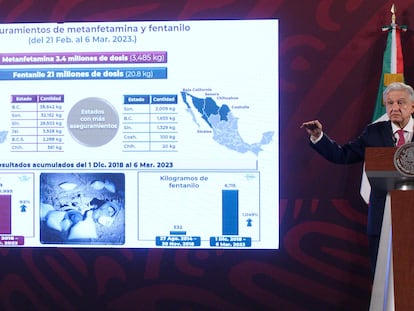The rise of Morena: In one decade, the political party has wiped the PRI from Mexico’s electoral map
The polls are predicting that President López Obrador’s party will win the gubernatorial election in the state of Mexico, which is made up of the areas that surround the capital. If the Institutional Revolutionary Party were to be be defeated after its 94-year-long hold over the governorship, this would be a major victory for the young political movement
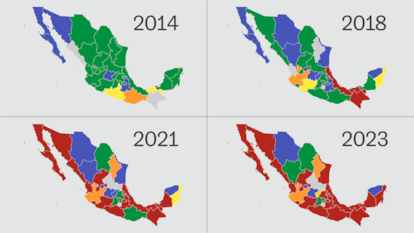
It hasn’t even taken 10 years for the Morena party — or the National Regeneration Movement — to become the dominant political force in Mexico. It has managed to wipe the historic Revolutionary Institutional Party (PRI) from the electoral map, with few regions able to resist the wave.
A decade ago, Morena didn’t even exist. And seven years ago, it didn’t hold a single one of the country’s 32 governorships, with only a minimal presence in Congress. Today, the party controls the presidency, along with several states. And, for better or for worse, the Chamber of Deputies and the Senate are dominated by Morena members.
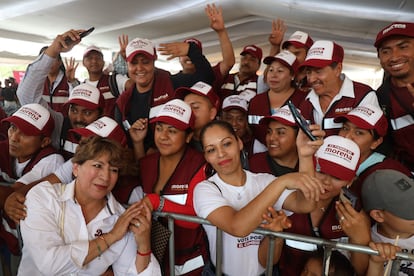
With an expected victory in the state of Mexico — known as “Edomex,” to differentiate it from the name of the country — the party of President Andrés Manuel López Obrador would consolidate impressive territorial power ahead of next year’s presidential elections. There would be 22 state governments — home to 89.5 million inhabitants, or two out of every three Mexicans — that are governed by Morena. With Edomex, the political movement would hold more power than the PRI, when the latter won the 2012 presidential and legislative elections, with former president Enrique Peña Nieto leading the party to victory.
Humberto Beck — a professor at the Center for International Studies of El Colegio de México — highlights Morena’s ability to break barriers. “If you look at the map of the governorships, it’s clear that Morena broke the geographical-political structure that prevailed in the country during the transition years,” he explains, referring to the two six-year terms of the PAN (the National Action Party) at the helm of the government, first with Vicente Fox and then with Felipe Calderón, from 2000 to 2012.
“The north [of Mexico] favored the PAN or the PRI, while the south favored the PRI or the PRD [Party of the Democratic Revolution]. That was very obvious,” Beck explains. “And now, this is broken. Morena is in Baja California and Baja California Sur, Sinaloa, Sonora, Tamaulipas,” he adds. “Winning the state of Mexico means breaking one of the great barriers that remain, due to the region’s historical association with the PRI. [Morena] already broke the northern barrier with the PAN, breaking through in Edomex would imply a new degree of territorial consolidation that changes the political board,” he argues.
Juan Jesús Ramírez — coordinator of the Political Studies and Governance program at the University of Guadalajara — discusses the implications of Morena’s potential victory in this region for the 2024 elections. “Of every 1,000 voters in the country, 120 or 130 are in the state of Mexico. Look at the difference: Coahuila [a northern state that borders the U.S.] barely contributes 25 out of every 1,000. That’s the difference,” he emphasizes. “It would be a great advance in terms of positioning, of consolidation, because it’s a historically PRI-dominated state, home to one of the strongest political wings of the party, the Atlacomulco group, to which Peña Nieto belongs.”
The rise of Morena has been meteoric these past few years, especially considering its beginnings. López Obrador’s failure in the 2012 presidential elections left him in a bad position within the PRD. The man from Tabasco had lost the elections for the second time, this time by a wide margin, unlike in 2006, when only a handful of votes kept him out of office. Back in 2006, López Obrador made allegations of electoral fraud and occupied downtown Mexico City for months — he even appointed his own cabinet of resistance. But after the 2012 setback, things changed. The PRD thought that the future lay in renewal, and López Obrador decided to move to the left. These were the beginnings of Morena.
From its birth as a political movement in 2012, to its conversion into a party in 2014, the party had a hard time getting started. It would take another four years to secure a victory. And today, the situation has completely turned around. The PRD is headed for extinction, led in the shadows by the same people who looked down on the current president. They have no governorships left and the PRD’s representation in Congress shrinks with each election. They only have a few district mayors’ offices in Mexico City, which they lead in a coalition with the PAN, an alliance that was unthinkable just a decade ago.
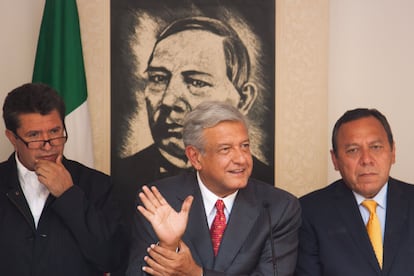
The question now — beyond Edomex — is whether Morena has reached its limit, or still has room for growth. And, if so, where, how and for how long?
Beck thinks that further growth is possible. “There are accessible reserves of power. For example, in the Bajío,” he notes, referring to states in the center of the country, such as Querétaro, Guanajuato, even Jalisco, which are still in the hands of the PAN and the Citizens’ Movement. “The same thing is true of half of the northern states. Nuevo León, Chihuahua and Durango continue to be in the hands of the opposition,” he adds.
The expert points out that “presidential power” will be Morena’s key to the future, more so than “ideological control.”
“The fact that a party has presidential power generates political magnetism. States have limited budgetary independence. They continue to receive considerable amounts [of money] from the capital. To the extent that these resources are mediated by the central power, whoever holds the presidency determines the local political sphere,” he continues. “In the event that Morena wins in 2024 — and López Obrador’s push is maintained — the party will be able to continue disputing historic positions of power.”
But both Beck and Ramírez point to an obstacle: the scarce institutional development of Morena, especially in a future without its founder. Or, in the words of Ramírez: “people see López Obrador — not Morena. Once he leaves politics, the party will lose that strength.”
“Starting in 2024,” he continues, “López Obrador will no longer be the center of attention. Now, the party is still united, but later, we’ll see what happens. Cohesion will depend on what happens in the electoral process. The problem could be that there are candidates who are dissatisfied with the results of the polls,” he warns, referring to Morena’s internal primaries, which will be held to determine who will be the party’s candidate in the 2024 presidential elections. “Given a possible split between [Mexico City Mayor] Claudia Sheinbaum, [Secretary of Foreign Affairs] Marcelo Ebrard, [Senator] Ricardo Monreal [and other Morena candidates], there will be state governments that side more with one than with others, and there could be divisions.”
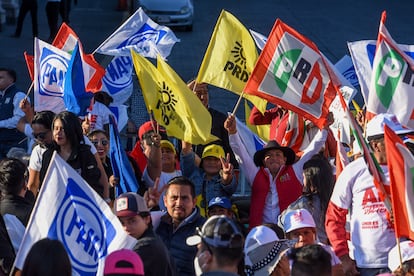
In the end, Morena and the political future of the country will depend on the strength of the current president. “Formally or informally, his leadership will continue to be the unifying force of that group. Taking that into account, I think that his leadership will allow [Morena] to continue competing in regions where the political barrier hasn’t been broken. Because even when AMLO [as López Obrador is informally known] isn’t occupying the presidency, his leadership will be combined with the continuity of Morena in the National Palace,” says Beck.
Ramírez poses a paradox as a possible future for Morena and the country: “To the extent that the image of López Obrador weakens, the inertia in favor of Morena will end. But if society feels that López Obrador will be in charge regardless of who wins the presidency, it will be good for Morena.”
The expert recalls the Maximato: the years following the Mexican Revolution, during which Plutarco Elías Calles — the man who founded the PRI and governed from 1924 until 1928 — controlled the presidents who succeeded him. “It would be difficult for this to happen today like back then, but perhaps he could maintain a media presence,” he shrugs, referring to the current president of Mexico.
Sign up for our weekly newsletter to get more English-language news coverage from EL PAÍS USA Edition
Tu suscripción se está usando en otro dispositivo
¿Quieres añadir otro usuario a tu suscripción?
Si continúas leyendo en este dispositivo, no se podrá leer en el otro.
FlechaTu suscripción se está usando en otro dispositivo y solo puedes acceder a EL PAÍS desde un dispositivo a la vez.
Si quieres compartir tu cuenta, cambia tu suscripción a la modalidad Premium, así podrás añadir otro usuario. Cada uno accederá con su propia cuenta de email, lo que os permitirá personalizar vuestra experiencia en EL PAÍS.
¿Tienes una suscripción de empresa? Accede aquí para contratar más cuentas.
En el caso de no saber quién está usando tu cuenta, te recomendamos cambiar tu contraseña aquí.
Si decides continuar compartiendo tu cuenta, este mensaje se mostrará en tu dispositivo y en el de la otra persona que está usando tu cuenta de forma indefinida, afectando a tu experiencia de lectura. Puedes consultar aquí los términos y condiciones de la suscripción digital.
More information
Archived In
Últimas noticias
Most viewed
- David King, chemist: ‘There are scientists studying how to cool the planet; nobody should stop these experiments from happening’
- Reinhard Genzel, Nobel laureate in physics: ‘One-minute videos will never give you the truth’
- Mexico completes its trade shift with the entry into force of tariffs on China and countries without trade agreements
- Oona Chaplin: ‘I told James Cameron that I was living in a treehouse and starting a permaculture project with a friend’
- Sinaloa Cartel war is taking its toll on Los Chapitos


